Proper roof ventilation is essential for energy-efficient homes. It regulates temperature, reduces energy costs, and prevents issues like mold and structural damage. Different types of roof vents, including intake, exhaust, combination, wind turbine, and power vents, cater to specific needs.
In this blog, we will discuss the importance of roof ventilation and how it can help you save money on your energy bills. So let’s dive in!
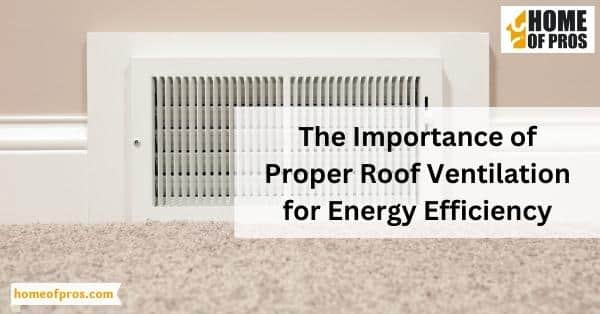
Why is Proper Roof Ventilation Important?
Proper roof ventilation is an essential aspect of any building structure, yet it is often overlooked. Without proper ventilation, the attic can become incredibly hot and humid, causing various problems such as mold, rot, and structural damage.
Furthermore, it can make the interior of the building uncomfortable and difficult to cool or heat, resulting in higher energy bills. In the winter months, poor ventilation can cause ice buildup and the subsequent formation of ice dams, which can lead to water damage inside the building.
By ensuring adequate ventilation, you can prevent these issues and keep your building in good condition for years to come. It’s important to consult with a professional contractor to determine the best ventilation solution for your specific building needs.
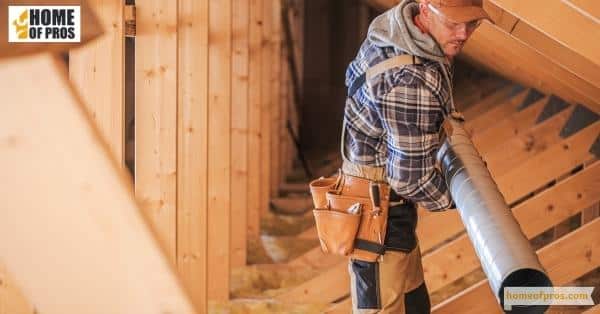
Benefits of Proper Roof Ventilation for Energy Efficiency
Proper roof ventilation is an essential component of any energy-efficient home. It allows for the circulation of air, which helps regulate temperature and moisture levels, leading to a more comfortable living environment.
In addition to improving indoor air quality and reducing energy costs, proper roof ventilation can also extend the life of your roof. Here are some benefits of proper roof ventilation for energy efficiency.
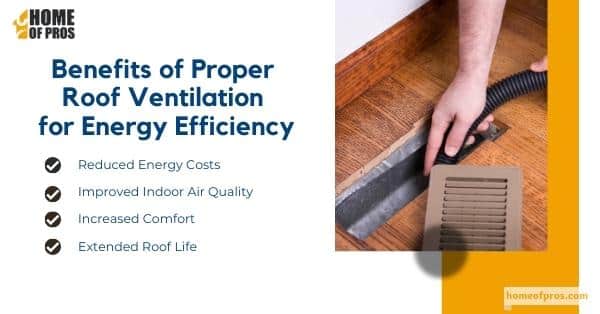
- Reduced Energy Costs: Proper roof ventilation can help reduce energy costs associated with heating and cooling your home. By allowing hot air to escape from the attic during the summer months, your air conditioner has to work less, resulting in lower energy bills. During the winter months, it helps prevent ice dams from forming, allowing your home’s heating system to work more efficiently.
- Improved Indoor Air Quality: Proper roof ventilation helps remove excess moisture and pollutants from your home. This can help prevent the growth of mold and mildew, which can cause respiratory problems. It also helps remove harmful chemicals that may be present in your home, such as cleaning products and pesticides.
- Increased Comfort: Proper roof ventilation helps regulate the temperature inside your home, making it more comfortable for you and your family. It also helps prevent moisture buildup, which can lead to dampness and discomfort.
- Extended Roof Life: Proper roof ventilation can help extend the life of your roof by reducing the risk of damage caused by moisture buildup. It can also help prevent shingles from curling or warping due to excessive heat.
Different Types of Roof Vents and Their Applications
Intake Vents
Intake vents play a crucial role in ensuring proper ventilation and air circulation in a building. They work in combination with other types of roof vents to keep moisture, hot air, and contaminants at bay.
With several types of roof vents available in the market, choosing the right intake vent can be overwhelming. For instance, soffit vents work best for low-pitch roofs, while gable vents are ideal for attic spaces.
Additionally, ridge vents are suitable for both low and steep-sloped roofs, while turbine vents work well for larger areas. Understanding the different types of intake vents and their applications is essential to keep your building properly ventilated and comfortable.
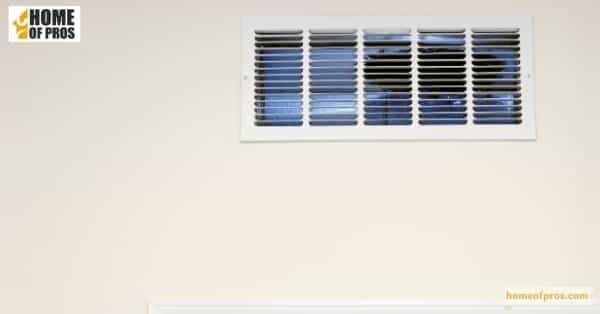
Exhaust Vents
Proper ventilation is essential for preserving the longevity of a roof, as well as maintaining the health and comfort of those underneath. When it comes to choosing the right exhaust vent for your roof, it is important to understand the different types available and their applications.
One common type of exhaust vent is the ridge vent, which runs along the peak of a roof and allows hot air to escape. Another option is the turbine vent, which uses wind power to draw hot air out of the attic space.
For flatter roofs, a static vent can be used to provide a steady flow of air. Understanding the specific needs of your roof and the climate in your area can help you choose the best exhaust vent to ensure your roof’s health and longevity.
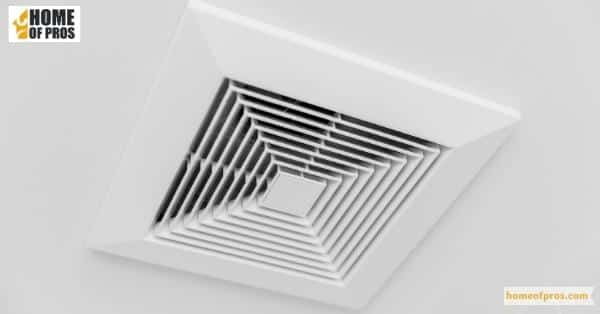
Combination Vents
Combination vents provide a versatile solution to roof ventilation needs. With different types of roof vents available, combination vents can be designed to cater to specific applications. For instance, ridge vents can be combined with static vents to improve exhaust ventilation in attic spaces.
Alternatively, turbine vents can be installed alongside intake vents to enhance the flow of fresh air into the attic. Such combinations give homeowners the flexibility to tackle ventilation issues in their homes without compromising on aesthetics.
Moreover, combination vents are easy to install, cost-effective, and low maintenance. They can significantly improve indoor air quality and reduce energy costs, making them a smart investment for homeowners.

Wind Turbine Vents
Wind turbine vents are an effective solution for a variety of roofing needs. They can be used in a range of applications and are especially useful in high-wind areas, as they generate power through the use of wind energy.
These vents come in a variety of shapes and sizes, making them highly adaptable to different roof types. They work by drawing hot air from the attic and venting it outside, which not only helps reduce excessive heat buildup in the roof but also reduces the need for air conditioning.
Whether it’s a shingled or a metal roof, wind turbine vents are a great option for providing effective ventilation while reducing energy consumption.

Power Vents
Proper roof ventilation is essential for any well-designed building. If you are considering power vents, it’s important to know the different types of roof vents available and their unique applications.
Soffit vents are great for intake ventilation, as they are located near the lowest part of the roof. Ridge vents provide excellent exhaust ventilation and are installed at the peak of the roof. Power vents are useful for homes and buildings where natural ventilation may not be adequate, especially in areas with high moisture or extreme temperatures.
They work by pulling hot, humid air out of the attic and allowing fresh air to enter through the other vents. Power vents come in different sizes and styles, so it’s important to choose one that best fits the needs of your roof and location. By understanding the different types of roof vents and their applications, you can ensure proper ventilation and extend the life of your roof.
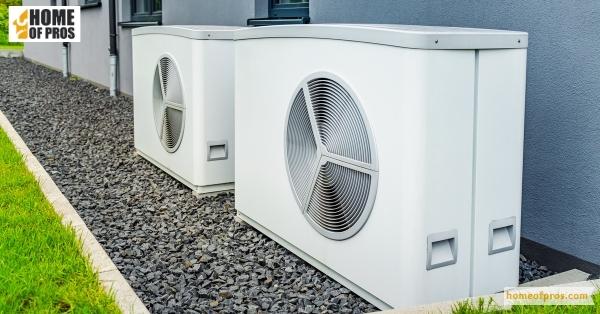
Factors to Consider When Choosing a Roof Ventilation System
A well-designed roof ventilation system is essential for any building. It helps regulate the temperature, moisture levels, and air quality inside the building, which can improve comfort and reduce energy costs. However, with so many types of roof ventilation systems available in the market, it can be challenging to choose the right one. Here are some factors you should consider when selecting a roof ventilation system.
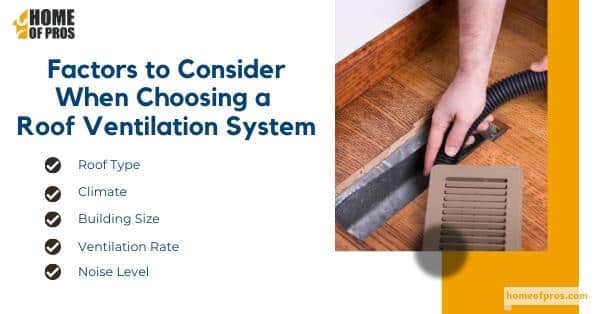
- Roof Type: Consider the type of roof you have before choosing a ventilation system. Different roofs require different types of ventilation systems, and some roofs may not be compatible with certain ventilation systems.
- Climate: The climate you live in will affect the type of roof ventilation system you need. For example, in hot climates, you’ll need a system that can handle high temperatures and provide efficient cooling. In cold climates, you’ll need a system that prevents ice damming and helps regulate heat loss.
- Building Size: The size of your building is also an essential factor to consider when choosing a roof ventilation system. Larger buildings require more significant ventilation systems to ensure proper air circulation.
- Ventilation Rate: The ventilation rate is the amount of air that flows in and out of your building over a given period. It is vital to choose a ventilation system that can handle the required ventilation rate for your building size and usage.
- Noise Level: Some roofing ventilation systems can produce a lot of noise, which can be disruptive. If you’re choosing a system for a residential building or a quiet office, you’ll want to select a system that operates quietly.
Choosing the right roof ventilation system requires careful consideration of multiple factors. By taking into account your roof type, climate, building size, ventilation rate, and noise level, you can select a system that meets your needs and ensures optimal performance for your building.
In Conclusion
Proper roof ventilation is an essential aspect of any building structure as it helps maintain indoor air quality and regulate temperature and moisture levels. By ensuring adequate ventilation, you can prevent various issues such as mold, rot, and structural damage. Additionally, the right roof ventilation system can help reduce energy costs while extending the life of your roof.












